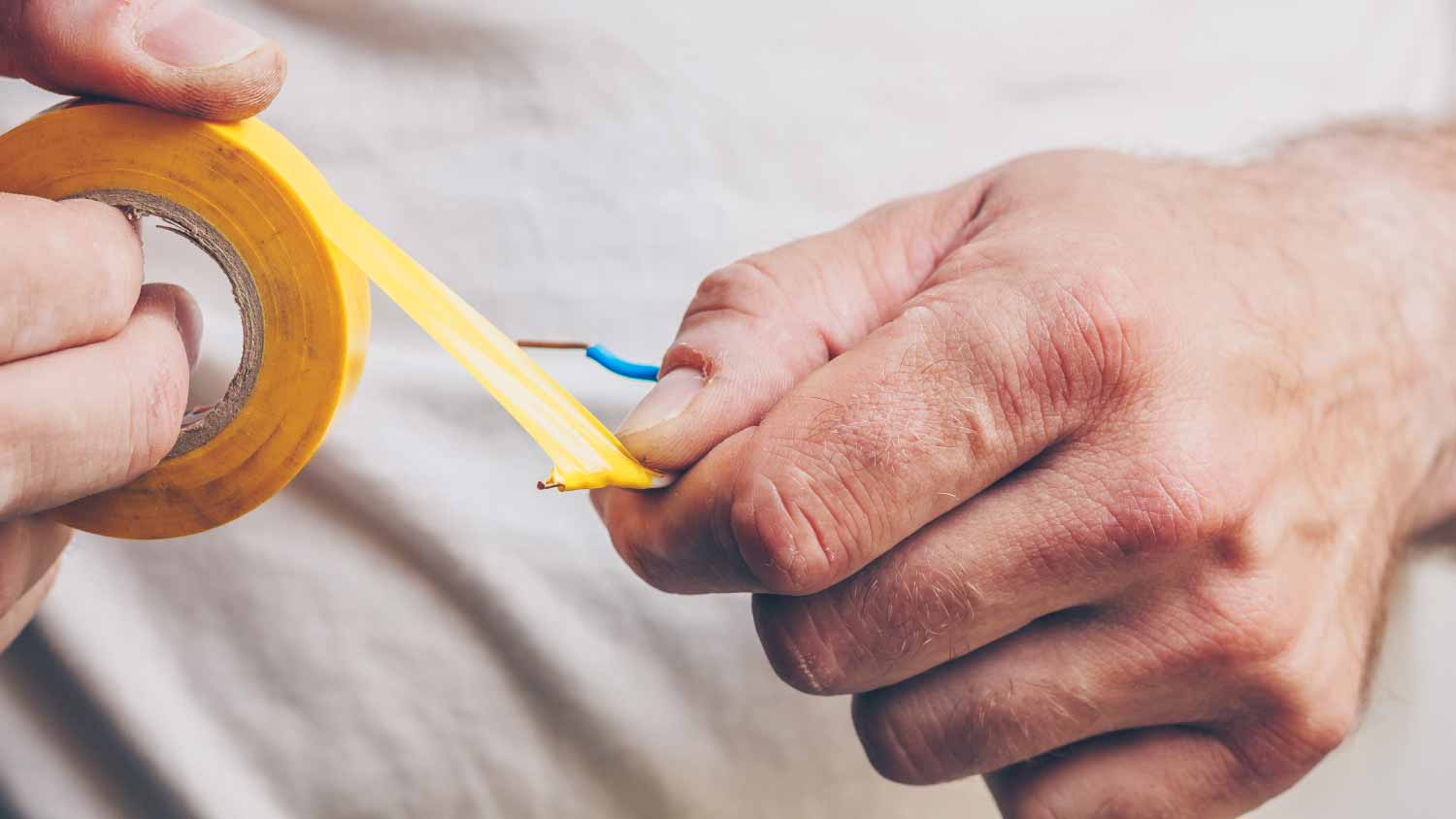
Your budget for moving an electrical panel depends on the type, labor, and more. Find out the average cost to move an electrical panel.
Stick to these rules when using electrical tape


All tangled up when learning how to use electrical tape? A homeowner's best friend when making repairs in a pinch, electrical tape is resistant to moisture, corrosion, and abrasion. However, electrical tape's ability to "hold it all together" is only as strong as your knowledge about how to use it. Luckily, this guide walks you through five big sticking points when using electrical tape.

Avoid mission failure by selecting the right grade of electrical tape from the start. This step requires you to spend a few minutes browsing online or perusing the electrical aisle at the local hardware store. Most high-quality electrical tape is made from some type of plastic, and PVC is generally considered the best option for this type of product.
All electrical tape comes with a minimum and maximum temperature rating. If you’re planning to use the tape outdoors in cold conditions, look for a cold-weather variety to ensure that the adhesive power of the tape endures. For example, this type is best for wiring outdoor kitchen fixes. For indoor projects, any standard electrical tape should be adequate.
You also want to prioritize electrical tape that carries Underwriters Laboratories (UL) approval. This step ensures that a product has been tested based on national safety standards.
When using electrical tape to bind wires, it’s essential to confirm that no electrical current is present first. Unfortunately, experiencing an electric shock while binding wires commonly happens because people think that this job is too "simple" to require the need to turn off electricity to the area. Always turn off the area’s power at the circuit breaker box and double-check the current status with a voltage tester before applying electrical tape.

The proper technique for applying electrical tape is something called the half-lap method. The half-lap method involves overlapping every turn by half the width of the tape. Even ultra-deluxe, ultra-strong electrical tape needs this technique to be as effective as possible.
Generally, you want to do a minimum of two half-lapped layers when binding wires. Electrical tape should always be thicker than wire insulation. To achieve this, make each layer at least half the thickness of the insulation on your wire.
Why is the half-lap method so important? When learning how to use electrical tape, this technique doubles up the tape to create stronger binding with enhanced insulation. This method is beneficial because it helps the tape to stay in place longer without peeling or wearing away.
Electrical tape works best when you mold it to the object it's being applied to instead of fitting it rigidly over the object. The best way to apply electrical tape is to stretch it as much as you can when you wrap it. Stretching while applying creates a much tighter application, sealing it onto the electrical object.

It’s important to keep in mind that electrical tape should not serve as a permanent fix for insulating outlets or junction boxes. What could go wrong? As electrical currents pass through bare wires, they produce heat. This heat can cause electrical tape to degrade and disintegrate over time. You should replace cords that are severely damaged to avoid dangerous shocks from live wires.
If you're noticing an unexplained uptick in the amount of power being drawn with your electric usage monitoring, it's possible that weak or damaged wiring is increasing energy consumption. It could also be putting you on the brink of an electrical fire.
While electrical tape can be a great temporary insulator while you wait for a local electrician to come out, relying on it as a permanent fix could be a dangerous decision. Instead, hire a professional electrician to repair, replace, or install electrical work in your home to ensure a safe and long-lasting solution.
From average costs to expert advice, get all the answers you need to get your job done.

Your budget for moving an electrical panel depends on the type, labor, and more. Find out the average cost to move an electrical panel.

The cost of a whole-house surge protector depends on the materials, size, installation, and more. This guide will help you budget for a new surge protector.

Attic fan installation costs vary based on location, fan type, and other factors. Get the cost breakdown for labor, materials, and additional extras so you can work out your budget for this essential home renovation project.

Here’s what you need to know to reset an outlet without a reset button. Follow this guide for resetting an outlet in a snap.

If you want a secure, reliable, high-speed internet connection, a hard-wired solution might be for you. Here’s how to wire your house for ethernet.

When it comes to precise measurements, you need a precise tool. A micrometer can definitely come in handy, so learn how to read a micrometer here.